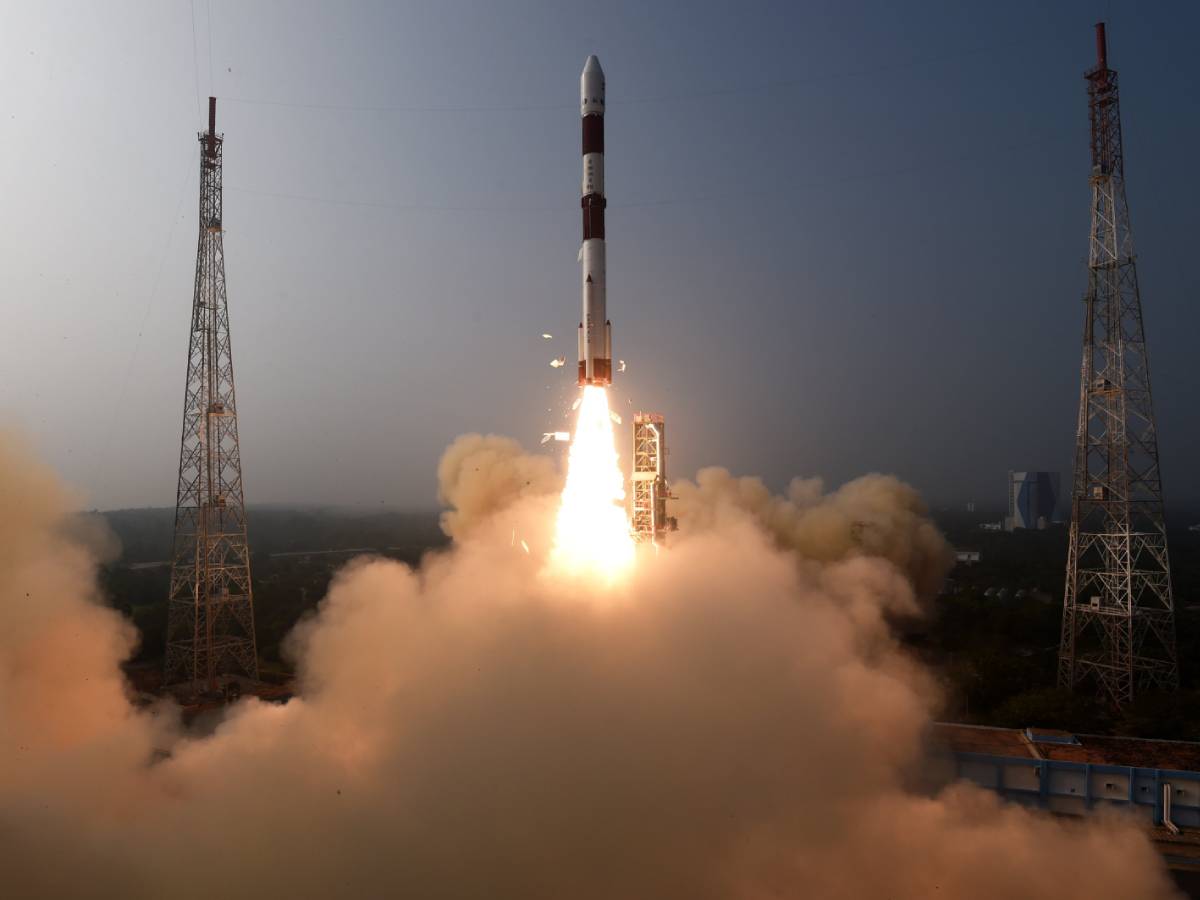
India’s march into space exploration and launches began with a bang on the first day of 2024. Its first launch on January 1 with the most reliable PSLV rocket was a smooth success.
By 0930 hours on Monday, Indian space agency, ISRO announced the successful launch of the XPoSat, a space-based observatory with the unique mission to study black holes, neutron stars and other interesting aspects of space. It marks India’s first entry into X-ray astronomy.
In a text book launch, the PSLV-C58 rocket took off at 0910 hrs from the Satish Dhawan Space Centre in Sriharikota. It placed the X ray Polarimeter Satellite (XPoSat) into its intended orbit of 650 km as most Indians were waking up to the exhilarating news after the overnight, new year revelries.
The PSLV C58 (Polar Satellite Launch Vehicle) also carried a payload of 10 smaller satellites which were placed in Low Earth Orbits (LEO). The PSLV-DL has an enviable record of 58 successes of the 60 launches so far, a 96% success rate.
The XPoSat is considered to be the world’s second such mission. In 2021, the US space agency, NASA had launched the Imaging X-ray Polarimetry Explorer (IXPE) to operate and perform X-ray polarisation measurements within the soft X-ray band. The XPoSat of the Indian Space Research Organisation will operate within the medium X-ray band. It has an expected life of 5 years.
With this impressive beginning, ISRO has also scripted POEM-3-the PSLV Orbital Experimental Module-3 experiment successfully by achieving the objective of placing the 10 payload satellites supplied by the ISRO and IN-SPACe.
The XPoSat mission & objectives
According to the ISRO, the XPoSat (X-ray Polarimeter Satellite) is its first dedicated scientific satellite to carry out research in space-based polarisation measurements of X-ray emission from celestial sources. It carries two payloads namely POLIX (Polarimeter Instrument in X-rays) and XSPECT (X-ray Spectroscopy and Timing). POLIX is designed by Raman Research Institute, Bengaluru and XSPECT is by Space Astronomy Group of URSC (U R Rao Satellite Centre), Bengaluru.
Mission has three-fold objective
- To measure polarisation of X-rays in the energy band 8-30keV emanating from about 50 potential cosmic sources through Thomson Scattering by POLIX payload.
- To carry out long term spectral and temporal studies of cosmic X-ray sources in the energy band 0.8-15keV by XSPECT payload.
- To carry out polarisation and spectroscopic measurements of X-ray emissions from cosmic sources by POLIX and XSPECT payloads respectively in the common energy band.
India had a history making 2023 when it became the First Nation to land near the South Pole of the Moon. It is also the fourth nation after US, Russia and China, to achieve a soft landing on the Lunar surface. The ISRO also launched the Aditya-L1 solar observatory as well as tested the Crew Escape System of Gaganyaan, its first astronaut mission, which is expected for launch in either 2024 or 2025.
Hyderabad’s Nanosatellite platform validated
The PSLV C58 launch validated the functionality and robustness of the P-30 Nanosatellite Platform and its subsystems in Low Earth Orbit, developed by the Hyderabad-based, Dhruva space company.
The Company’s ‘Launching Expeditions for Aspiring Payloads — Technology Demonstrator’ (LEAP-TD) mission features a derivative of the P-30 satellite platform integrated to POEM (PSLV Orbital Experimental Module platform) allowing in-orbit scientific experiments.
The LEAP initiative has been transitioned into a full-fledged hosted payload solutions for space. A hosted payload service comprises a portion of a satellite, such as a sensor, instrument or a set of communications transponders that are owned by an entity other than the primary satellite. “This will be further enriched by new, upcoming pursuits in the fields of Earth Observation, IoT solutions, and more,” said Dhruva Space chief executive officer Sanjay Nekkanti.
An important component in the P-30 is a ‘Reaction Wheel’ from the French equipment supplier Comat, with whom Dhruva Space tied up in February, 2023. Satellites are usually integrated with four ‘Reaction Wheels’ for three-axis stabilisation, to generate internal torque, enable high precision pointing, and to maintain power efficiency.
“We are honoured to be supplying the precision reaction wheels that propel this mission to new heights strengthening the French-Indian partnership in the space sector,” said Comat chief executive officer Ludovic Daudois, in a press release.
The excitement ahead this year
In addition to beginning 2024 in style, the ISRO has also established new technologies in its launch vehicle like the use of silicon based, high energy batteries, mono propellants and fuel cells. There is a growing partnership of the private sector and leadership role of women in its projects too.
During the first quarter of 2024 itself, the ISRO is all set for three critical launches. After the January first XPoSat launch, plans are to launch INSAT-3DS satellites on-board the Geosynchronous Launch Vehicle (GSLV-F14), around January 12. The mission will carry satellites for the India Meteorological Department (IMD) as part of its series of climate observatory satellites. The mission was initiated as part of collaboration between ISRO and IMD, to improve the network of climate services.
The third is the India-US-the NASA-ISRO Synthetic Aperture Radar Mission (NISAR). It is expected to be launched during February-March. NISAR, a low earth orbit observatory (LEO), will map the globe in 12 days and provide spatially and temporally consistent data for understanding changes in Earth’s ecosystems, ice mass, vegetation biomass, sea-level rise, groundwater and natural hazards, including earthquakes, tsunamis, volcanoes and landslides.



